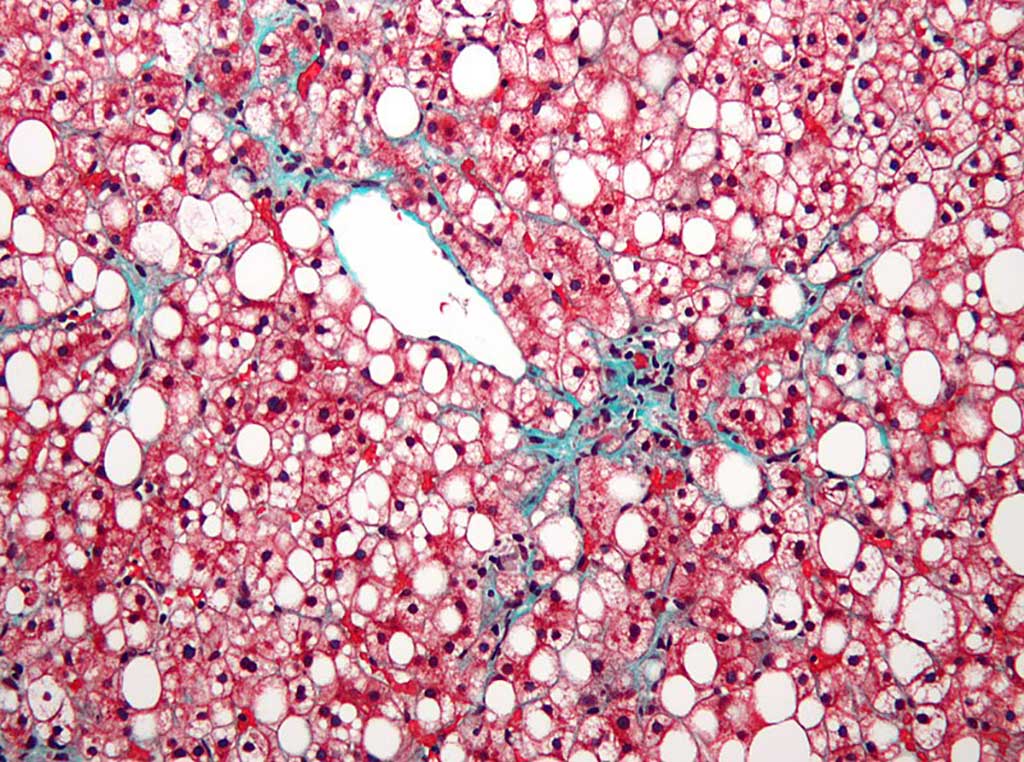Protein Biomarker Is Early Predictor of Likelihood of Developing Liver Disease
By LabMedica International staff writers
Posted on 13 Apr 2020
Results obtained during a recent study suggest that neuronal regeneration related protein (NREP) can be used as an early biomarker for the detection of nonalcoholic fatty liver disease (NAFLD).Posted on 13 Apr 2020
NAFLD is the most common liver disorder worldwide and leading cause of chronic liver disease. The disease affects approximately 25% of the world's population. It is particularly common in developed nations, such as the United States, and affected about 75 to 100 million Americans in 2017. Over 90% of obese, 60% of diabetic, and up to 20% normal-weight people develop NAFLD. Genetic factors are known to play a major role in determining the likelihood of developing NAFLD. Since there are no methods for early detection of the disease, researchers have been searching for early biomarkers that could be used for this purpose.

Image: Micrograph of non-alcoholic fatty liver disease, demonstrating marked steatosis (fat in liver cells appears white; connective tissue, blue) (Photo courtesy of Wikimedia Commons)
Towards this end, investigators at the Joslin Diabetes Center (Boston, MA, USA) studied NAFLD in a mouse model and integrated the results into the human clinical setting.
For this study, the investigators used the liver-specific insulin receptor knockout (LIRKO) mouse. This is a unique nondietary model manifesting three hallmarks that confer high risk for the development of NAFLD: hyperglycemia, insulin resistance, and dyslipidemia. The investigators found that parental metabolic syndrome epigenetically reprogrammed members of the TGF-beta family, including neuronal regeneration–related protein (NREP) and growth differentiation factor 15 (GDF15). NREP and GDF15 modulated the expression of several genes involved in the regulation lipid metabolism in the liver.
These findings from the mouse model were given clinical significance by the observation of low expression of NREP in the livers of human patients with NAFLD and the negative correlation between serum NREP levels and NAFL activity score in an independent cohort of well-characterized obese NAFLD patients.
"We detected this protein really clearly and we could show a pattern that tracks the progression of the disease. So, this is really exciting," said senior author Dr. Rohit N. Kulkarni, professor of medicine at Harvard University (Cambridge, MA, USA). "We can really begin to consider, in the clinic, using this protein as a biomarker to identify those individuals in that risk window. We can also track those who already have low NREP but do not have the disease, with the assumption that when it is low, then they are much more susceptible and should be followed up very carefully. That gives an important perspective for extra, personalized care."
The NAFLD study was published in the April 6, 2020, online edition of Journal of Clinical Investigation.
Related Links:
Joslin Diabetes Center
Harvard University









 Analyzer.jpg)




